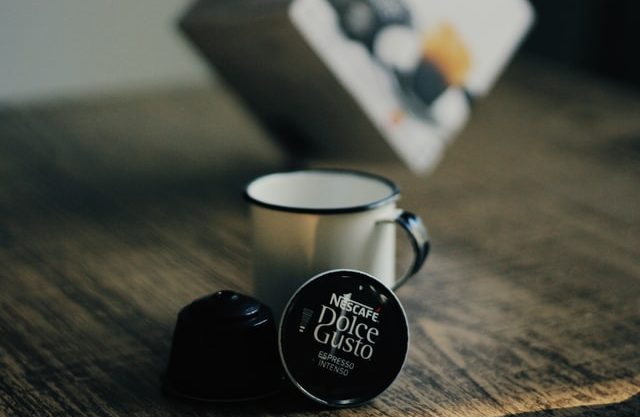I vividly remember spending my childhood evenings heavily snacking on a bowl of Maggi, desperately trying to slurp down the remnants of it before my little brother ate off my plate. In school, the birthday boy/girl distributed “Munch,” “Kitkat,” or “Milkybar” to his/her classmates as a customary ritual.
Nestle, with its business model of creating shared value and its rock-solid marketing mix, has managed to find a cozy place in every household It has, of course, come a long way since its inception. And that makes the brand the number 1 FMCG company in the world.

The story began in Switzerland during the 1860s when one in five children died before the age of one year from malnutrition or disease.
A pharmacist’s assistant, Henri Nestle, appalled by this phenomenon, decided to deal with this problem. He developed a particular ‘soup for infants’ by crushing digestible bread with a paste of milk and sugar. This ‘infant cereal’ saved many children’s lives and soon made its way from Switzerland to the whole of Europe and then worldwide. There has been no looking back ever since!
Nestle Business Model: Creating Shared Value
Nestle, the “Good Food, Good Life” company, focuses on enhancing the quality of life and contributing to a healthier future, much aligned to why the FMCG giant was founded in the first place.
Did you know? The company has a dedicated Nutrition Council called Nestle Nutrition Insititute. The Nestlé Nutrition Institute is a not-for-profit association established in 1981 to advance the science of nutrition. It comprises internationally renowned nutrition scientists who look into current and developing nutritional issues, which provide the company continuous advice related to its business, policies, and strategies! I mean, I’d be highly flattered if someone took care of me like this!
In its annual report, the company highlights its business strategy by emphasizing how it moves around the following key points-
- Ensuring sustained organic sales growth, improved margins, and being relevant to the consumers in terms of bringing safe and high-quality nutrition to everyone, regardless of income level.
- Improving operational efficiencies to increase underlying trading profits.
- Allocating resources and capital with discipline and clear priorities.
While making nutrition accessible and affordable for all, the company adopts a balanced pursuit of combining global resources with local know-how to create value for society and its shareholders.
So how does Nestle do it?
The most important customer groups that Nestle targets are: children and older adults. For the former, they have a range of baby food, and for the latter, they offer clinical nutrition. However, now they cover nearly all age ranges and have a comprehensive portfolio of products!
Being a nutrition company, Nestle makes use of a lot of relationship marketing principles to engage the customer. A typical advertisement usually revolves around a caring mother who has a mission in her life to keep her children healthy, happy and hunger-free.
The marketing tactics are pretty simple and position the brand as a “Caregiver.” The company believes in creating a “shared value” for both society and its shareholders, operating on a 5P model-Purpose, Planet, Partnerships, People, and Performance.
Lets’s deep dive into the Marketing Mix of Nestle (4Ps)
Product–
Nestle has seven business verticals offering health, nutrition, and wellness products. Its dairy products, powdered & liquid beverages, prepared dishes and cooking aids, and confectionery business verticals are the “stars” in the BCG matrix. In contrast, the remaining business verticals like water, and nutrition drinks pose a “question mark” due to the presence of a large number of local and national players. As per Nestle’s annual report:
- High-growth categories of coffee, pet care nutrition, water, and nutritional health science. Together, these represented 63% of sales.
- High-growth platforms, such as plant-based food and ready-to-drink beverages. In 2020, vegetarian and plant-based food offerings continued to see strong double-digit growth.
- Trusted brands, such as Maggi, Milo, and Nido. 34 of our brands generate over CHF 1 billion each in annual sales at the retail level.

In Beverages, Nescafe is the most known coffee brand and also one of the biggest cash cows. There is a worldwide distribution of different variants of Nescafe. The company has also launched Nestea for the very chai-obsessed Indian population.
Nestle Everyday and Nestle Milk Maid are the most famous milk and milk-based products.
In the third category of products, prepared dishes, and cooking aids, Maggi tops the market. The company has also expanded the Maggi brand to create an umbrella of different products like Maggi Pasta, Maggi Sauce, etc. Check out the dramatic story of Maggi in India and associated lessons in the brand management.
KitKat, Munch, Milkybar, Eclairs, Polo, BarOne are the popular bar chocolate offerings from the house of Nestle. All of them compete neck-to-neck with their Cadbury counterparts.
Since Maggi and Nescafe are the primary revenue generators for the company, I will be using their reference quite often in this article. Not only are they well known, but most of us have grown up consuming them.
Price–
The strength of pricing for Nestle also comes from its packaging. For Nescafe as well as Maggi, Nestle offers a lot of sizes and package options! You could find large family packs of Maggi while finding a small pack also. Thus giving Nestle a strong pricing power.
Thus, with the variety available, the customer can choose based on his consumption. In other products like Kitkat and Munch, the company resorts to competitive pricing due to tough competition. You will most often find that Nestle prices its products similar to Cadbury in the chocolate segment.
Pricing contributed 0.4% to annual sales and improved during the year, particularly in emerging markets. Due to Covid, tough supply chain distribution, raw material sourcing, and increase in input prices affected its ability to capture a higher margin.
Place–
A typical distribution channel of Nestle is as follows-
Manufacturer>> C&F Agent (Warehousing)>> Distributors>>Retailers>>Consumer
Manufacturer>>Bulk Buyers>> Consumer
The company prides itself over its distribution channel which consists of a network of intermediaries, all taking part in doing their bit to get the products closest to the ultimate consumer.
The mammoth organization operates from 187 countries and hires almost 308,000 people worldwide. It has a separate quality policy that ensures that the products comply with food safety standards, regulations, and quality requirements. It advocates a no-waste attitude with zero defects. Key strategies which make the company’s supply chain strong are-
- Understanding and engaging with the customer.
- Ensuring responsible sourcing.
- Acquisitions to eliminate any threats and gaining access to the acquiree’s suppliers in the process.
- Commitment to becoming fully zero-waste.
Promotion–
The company uses a mix of value-based and product-based positioning strategies depending upon the kind of product they are branding and the market they are selling in. Take, for example, Maggi, which is associated with being a 2-minute snack that mothers can easily prepare for their hangry kid! I’m pretty sure all of you have watched this adorable advertisement! Nevertheless, I’m going to link it down below for you guys to reminisce.
The strategy used in the case of Maggi is that of a value-based approach. A value-based approach focuses on pivoting the product on the kind of value it can offer and the value perceived by the end customer. Maggi is something that everybody knows how to make and swears by. This is evident because Nestle had to suffer a massive decrease in customer trust post the Maggi-ban. However, today, Maggi has got back its pre-ban customer percentage and continues to be at the top of the packaged food chain, all thanks to the brilliant family-based marketing campaigns and use of the nostalgia factor.
Now, coming to Nescafe, how can we possibly forget the Nescafe jingle? Did you belt out the tune? Oh, I’m pretty sure you did! This is a classic case of product-based marketing. Ever been to the local Kirana shop asking for a “Nescafe” rather than just “coffee”? We’re all guilty of it.
Nestle- Investing for the long term
Nestle has focused on making sustainability an important part of its business model. According to the reports issued by the company, Nestle has made a commitment to reach net-zero emissions across the whole of its operations by 2050.
In order to achieve this, radical action is to be taken across the value chain including switching to renewable energy in factories and offices, looking for innovative and sustainable packaging options, to working with suppliers and farmers on future-proofing the food system!
Nestle is planning to transform the way they operate, exploring new business models and addressing the biggest challenges in our food supply chain. That includes advancing regenerative agriculture, scaling up reforestation programs, making products more sustainable, using more renewable energy, and reducing waste.
Closer home, CMD Suresh Narayan of Nestle India had this to say: “There are so many categories in which we are not in. We don’t have a premium coffee business. Expresso and Dolce Gusto is not here. Our pet care is not here. Cereals is not here, in healthcare we are here but it is very small. Skin health we are here but it’s relatively very small. These are potentially the businesses.”
We’re eagerly waiting for the company to surprise us. Maybe we’d bring out another Strategy Story about it. Until then, stay tuned!
We continue to invest in research and development (R&D) and in our brands, and we made further investments behind key growth platforms. Purina PetCare unveiled plans to extend its production network in the Americas, Europe, China, and Australia. Nespresso announced a CHF 160 million investment in the expansion of its production center in Romont, Switzerland, to meet growing consumer demand worldwide. To accelerate the development of nutritious and environmentally-friendly plant-based products, we expanded production and R&D facilities and extended our supply chain partnerships.
Annual Report 2020
-AMAZONPOLLY-ONLYWORDS-START-
Also, check out our most loved stories below

Why did Michelin, a tire company, decide to rate restaurants?
Is ‘Michelin Star’ by the same Michelin that sells tires, yes, it is! But Why? How a tire company evaluations became most coveted in the culinary industry?

Johnnie Walker – The legend that keeps walking!
Johnnie Walker is a 200 years old brand but it is still going strong with its marketing strategies and bold attitude to challenge the conventional norms.

Starbucks prices products on value not cost. Why?
In value-based pricing, products are price based on the perceived value instead of cost. Starbucks has mastered the art of value-based pricing. How?

Nike doesn’t sell shoes. It sells an idea!!
Nike has built one of the most powerful brands in the world through its benefit based marketing strategy. What is this strategy and how Nike has used it?

Domino’s is not a pizza delivery company. What is it then?
How one step towards digital transformation completely changed the brand perception of Domino’s from a pizza delivery company to a technology company?

BlackRock, the story of the world’s largest shadow bank
BlackRock has $7.9 trillion worth of Asset Under Management which is equal to 91 sovereign wealth funds managed. What made it unknown but a massive banker?

Why does Tesla’s Zero Dollar Budget Marketing Strategy work?
Touted as the most valuable car company in the world, Tesla firmly sticks to its zero dollar marketing. Then what is Tesla’s marketing strategy?

The Nokia Saga – Rise, Fall and Return
Nokia is a perfect case study of a business that once invincible but failed to maintain leadership as it did not innovate as fast as its competitors did!

Yahoo! The story of strategic mistakes
Yahoo’s story or case study is full of strategic mistakes. From wrong to missed acquisitions, wrong CEOs, the list is endless. No matter how great the product was!!

Apple – A Unique Take on Social Media Strategy
Apple’s social media strategy is extremely unusual. In this piece, we connect Apple’s unique and successful take on social media to its core values.
-AMAZONPOLLY-ONLYWORDS-END-
















